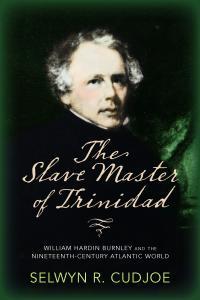Slavery, Education, Social Justice
By Dr Selwyn R. Cudjoe
November 16, 2019
Part of the excitement of being an educator is my having spoken in many places (such as Canada, the United States, Central America, South America, the West Indies, Japan, Africa and the Fiji Islands) about slavery, education and social justice. I am always excited to share my thoughts about these issues and learn what others have to say about their conditions.
Last Saturday (November 2) I participated in a conference at Fordham University that celebrated the 50th Anniversary of the founding of the African and African Studies Department. I was there at the beginning. I was a part of the "Founders Panel." I spoke of the challenges we faced in those early as we formed a department that studied the history, literature, political and social sciences of Africa and its diaspora.
That the department survived for 50 years amidst a rocky and tempestuous time in American higher education is a testimony to all of us who plunged forward, almost blindly, in the 1960s and 70s. It was an unchartered territory for all of us.
Irma Watkins-Owen, one of the pioneers of the African American Department at the Lincoln Center Campus, reminded us that "there were more than 600 African American Studies department in 2013 and the number has dipped to 361 program nationwide. She urged 'caution, vigilance, and activism.'" (See Fordham News, November 5, 2019). We did well under the circumstances.
On Thursday I delivered another lecture at Providence College, Rhode Island, under the rubric "Slavery, Education, and Social Justice." I spoke about my most recent book, The Slave Master of Trinidad and how the life of William Hardin Burnley illuminated the topic at hand.
Although Burnley was a tyrannical master who was cruel to enslaved people he was an important transatlantic figure of the nineteenth century. His sister, Maria, married Joseph Hume, one of the most powerful members of the British Parliament. This association gave Burnley immediate access to the upper echelon of the Colonial Office.
Since I was speaking at a college on the East Coast of the United States, I pointed out that Andrew Hanswell Green, "the Father of Greater New York," was an overseer on Burnley's Orange Grove sugar estates for a year. He lived "in a shed that was eight-feet-by-eight feet off the main house. The shack had no 'roof,' just shingles place across the eaves, frequently exposing Green to the weather" (Michael Rubbinaccio, New York's Father is Murdered). In 1898 Green brought the New York boroughs together into one municipality.
A history professor couldn't believe what he was hearing. He asked: "Do you mean to say that the founding father of Greater New York was an overseer who lived on a Trinidad plantation before becoming such a prominent member of New York City?"
I explained that in the 18th and 19th centuries "sugar was considered the 'white gold' in the commercial arenas of the world, but it was accrued by the scourge of 'black gold'-slave labor" (Micki Pistorius, "Sugar and Slaves.")
I added that in 1770 "It was the wealth accumulated from West Indian trade which more than anything else underlay the prosperity and civilization of New England and the Middle colonies" (Quoted in Eric Williams, Capitalism and Slavery).
On Friday, the New York Times published an article in which Gaston Browne, Antigua's PM, called upon Harvard University to pay reparations to the island. He recounted that Harvard Law School was founded and financed by Isaac Royal, Jr., a slave owner from Antigua (November 8).
Four years earlier, professors Daniel Coquillette and Bruce Kimball of Harvard and Ohio State Universities respectively, had given the Browne the ammunition he needed to prosecute his case. They reported: "Royall was hardly the ideal founder of a school devoted to the study of law and justice. He was a slave owner whose fortune was based in large part on the cruel sugar cane plantations of Antigua. He and his father survived a major slave revolt, which ended with slaves burned at the stake, broken on the wheel, and gibbetted alive" (On the Battlefield of Merit).
The slave revolt, which Royall survived, was preceded by "the Ikem dance, performed in broad daylight by the slaves' leader, 'King' Court, 'the chief Person in this affair. This was 'an Akan royal ritual meant to seal the support of one's countrymen'….The white spectators had no idea of what the dance meant, 'thinking it an entertainment put on by and for slaves.' There were also oaths, administered with sacred drinks prepared by an 'Obeah man,' an Akan shaman-type figure, who leant the ceremony spiritual gravity.'"
This could have been a scene taken from 19th century Trinidad. Experience has taught me that studying the lives of slave owners can teach us a lot about we responded and struggled for the common good, and and how much black people in the region have in common.
We have provided the wealth that built the new world. Although we don't know it, we must cement the intellectual and spiritual work our fathers and mothers have done to keep us psychically centered and alive.
Fifty years ago I set out on a pilgrimage to know and to understand my people. It is a task to which all of us should commit ourselves. I don't know far we have instituted the teaching of Caribbean history in our secondary schools but it must be the basis upon which we prepare ourselves for the tasks that lay ahead.
Studying the past helps us to understand the future. It is the fount from which all good things grow.
Professor Cudjoe's email address is scudjoe@wellesley.edu. He can be reached @ProfessorCudjoe.
Share your views here...

The Slave Master of Trinidad by Dr. Selwyn R. Cudjoe
|

